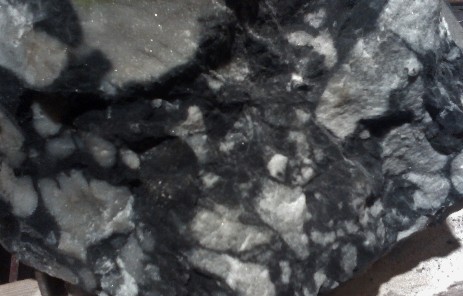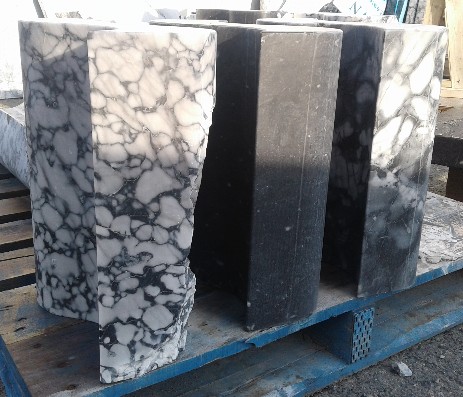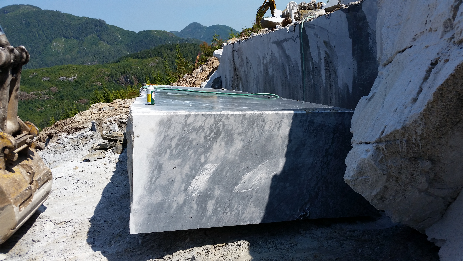Marble - BC Marble Symposium
BC MARBLE SYMPOSIUM

Main menu:
Marble
Marble is a hard, crystalline metamorphic rock made up of calcite or dolomite crystals.
It starts its life deposited as limestone sediment in the world’s seas and during the process
of mountain building (or oogenesis), it is subjected to heat and pressure over millions of years. This process, called metamorphosis and it changes the limestone to marble – The length of time the marble takes to cool determines the size of the crystals.
Marble is a marvellous rock for sculptors to work with as it takes a high, lustrous polish and
is relatively easy to carve, as it is much softer than granite. Sculptors have sought after marble for 1000’s of years as a material for statues and monuments as a facing stone in buildings and residences, for pillars, colonnades and floor tiles.
Marbles range in colour from snow-white to grey and black; many varieties have shades of red, yellow, pink, green or buff. The colours, are caused by the presence of impurities mixed
in with the calcite, are frequently arranged in bands or patches, which add to the beauty of the stone when it is cut and polished.
The ancient Greeks used marble extensively and has been favoured as a sculpting material throughout history, especially during the Renaissance, Michelangelo's famous sculptures
‘David’ and the ‘Pieta’ are made of marble. Among the famous marbles of Italy are the Carrara and Siena marbles of Tuscany. Carrara has become the mecca for stone sculpting and learning related to it.
Some of the marble used in the Sculpture Symposium this year is from our quarry at Skull Lake. Marbles are quarried in all parts of the world. When freshly quarried it is slightly “soft” and a little more flexible, therefore easier to work in finer detail.
Sculptors carving tools are often made of steel or iron which has a general hardness of about 5 (on Moh’s Scale of hardness from 1 – 10), making it easier to carve marble.



Home | For the Sculptor | For the Sponsor | The Symposium | Marble | About | Contact | General Site Map






